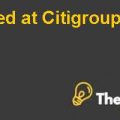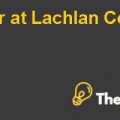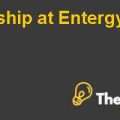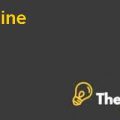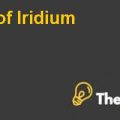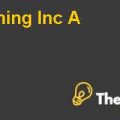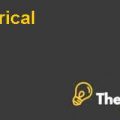GOOD YEAR TIRE AND RUBBER COMPANY Case Study Solution
INTRODUCTION:
Good year is one of the largest tire manufacturing concerns of the world. Its market share was 36.8 % as reported in 2006. The company was founded by Frank Seiberling. The production within the company started with very less capital employed followed by growth over the years. Hard work paid off and by 2007, the company had 84,800 employees and the revenue crossed over 20 billion. The company’s operations consist of tires under many renowned brand names such as Good Year, Dunlop and many others.
COMPANY’S CONCERNS:
Although the company is operating with good financial health and overall competing with the market however, the need to build a stake and to retain the market share is there, and for that purpose the company is considering offering new equity to raise the equity finance and capitalizing the effect of increased share price favorably, however there are many pros and cons attached with the new offer of shares to the general public as well as to the shareholders.
Basically the question of concern, which we are going to analyze is that whether the issuing of additional equity shares would add value to the company or is it only the way which would add up to the cost of the company, and whether it would be an opportunity for the shareholders to get the benefit after equity financing or merely cost of capital gets doubled.
STRENGTHS AND WEAKNESSES OF EQUITY OFFER:
STRNGTHS:
Overall, the company is at a very good position of issuing shares and to increase the equity worth and strengthening the financial condition by issuing equity finance, the reasons that are responsible for this are:
At the time when the company is having good share price and promising overall prospects, there would be good opportunity for the management of the company to fulfill its plans for the betterment of internal operations that is known by the managers of the company. Managers are aware about the company’s need of raising additional capital and they can use this new equity raised for various purposes.
Paying off long term debts and investing it for new ventures in automobile industry would bring fruitful results. Moreover, the investors would like to fund follow-up equity finance because they have put their trust in the company and by getting an opportunity to raise their stake in the growing company, they would definitely put their interest in this idea.
Weaknesses:
The investors should clarify the reasons and plans and future prospects, which they intend to do with this new capital issue, because the investors need to get informed about the plans and future goals of the company. In order to provide additional funds to the company, extensive marketing and clarity is required through the investors’ point of view. It should also be ensured that the investors are well informed and there would be no information disparity.
From the above analysis it can be said that the benefits and strengths of additional funding is more then not raising any additional fund at this point of time because the company’s current financial state is stable and by taking effective precautionary measures additional equity follow-up would be fruitful.
VEBA:
VEBA is an arrangement made by the employer for the employees for the allowance and arrangement for eligible medical expenses. By using VEBA service and trust, the employer can contribute money to the trust for using it effectively for its employees. It is an effective arrangement that provides employees surety that they can get the reimbursement of their eligible medical expenses without any uncertainty in this regard.
These funds, which are used by the organization, are used for reimbursing the medial expenses during the employment or after retirement.
Basically it is an effective arrangement that goes in the favor of the employees, however overall it creates a favorable image that the organization is concerned about the employer’s needs and safety.
VEBA’S EFFECT ON INVESTORS PERCEPTION:
If the company would succeed in making effective arrangements and contract with VEBA association, it would be very much advantageous to portray favorable image to investors. By this effective arrangement, the OPEB liabilities that are piled up in the company’s balance sheet would be removed related to those employees who had to leave their job due to the closure of the segment. Furthermore, the future OPEB expenses of the company would also be dealt by VEBA after that contract.
Mixed viewpoints were seen and observed regarding VEBA initiative, as some employees considered it favorable and positive, while other employees were concerned that if the financial condition would deteriorate, then it would have adverse consequences.
Through the investors’ point of view, this step is good for overall financial health of the company. If the negotiations and management of the funds would be appropriate, then it would bring favorable cost cutting returns and investors would find it worthy to invest in the company.
By the financial analysis, it is estimated that the annual expenses would be reduced by $110 million and OPEB liabilities would be reduced by more than half.
When expenses reduce, the profits grow, and investors find it as the right time to invest in increasing the capital of the company.
COST OF EQUITY ISSUANCE:
Equity issuance is never easy for any company. Many direct and indirect costs are associated with equity issuance, since the cost of marketing the new issue leads to further increase in the cost. Determining the best way to market and making suitable budges would help to reduce the costs reasonably.
Some of the direct costs associated with this process are:
- Fees paid to underwrite the new shares issued.
- Legal costs paid
- Cost associated with the printing and distribution of the prospectuses.
- Marketing costs of issue.
These are some of the direct costs that the company has to bear while offering new issue.
Apart from direct costs, indirect costs are also there to be dealt with. Indirect costs are those that the company has to face after the announcement of the new shares issue the market reaction after the announcement, and the discount the company has offered after the closure of previous day books.
GOOD YEAR TIRE AND RUBBER COMPANY Harvard Case Solution & Analysis
In the given scenario, the marketing and awareness about the new equity issue would help to reduce the costs because the reaction of market is excessively negative when there is a follow up equity issue as compared to the new issue of the shares. The figures indicate that the company would bear huge cost of issuing the equity, and large proportion of proceeds would be used to cover the costs of issuance of equity........................
This is just a sample partial case solution. Please place the order on the website to order your own originally done case solution.


